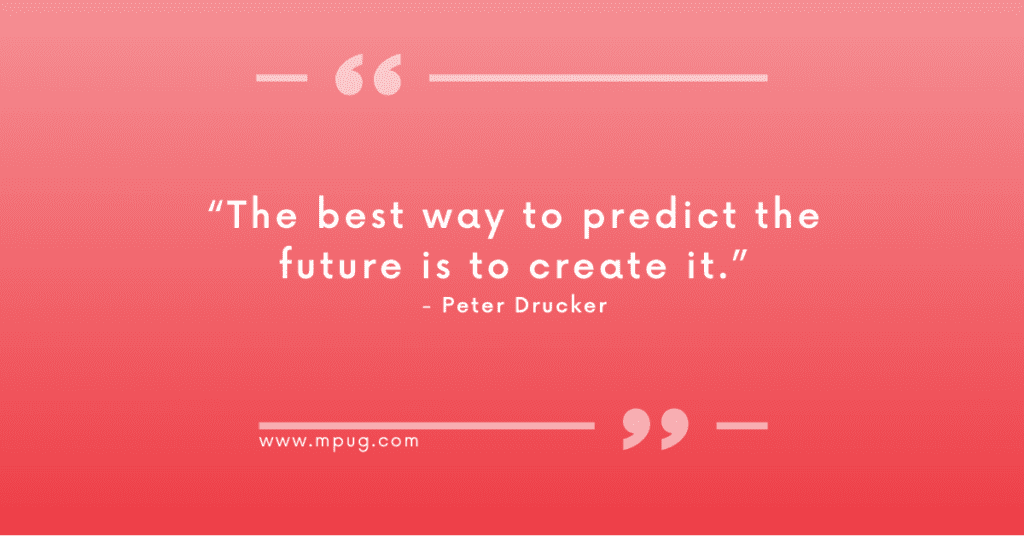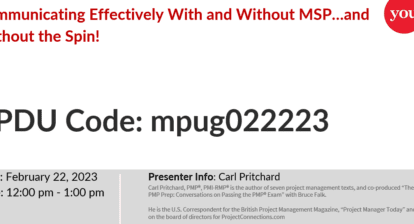
The day-to-day execution of a project is a new adventure every day, with new challenges, new surprises, and yesterday’s follow-ups. To improve project execution, it is critical to have certain documents in place and steps taken in the early stages of the project. This record will provide a base for recollection and improvement. Measurements along the way are also required to determine if our actions are bringing about the desired results toward our objective.
Here are 5 ways to improve project execution.
1. The Project Manager (PM) must understand and articulate the goals and objectives.
It is not possible to discuss objectives without first understanding them. Defining clear Project Goals and objectives is crucial for the success of a project. It is good to engage the team in defining these goals and what must be done to achieve those objectives. Engaging the team members in this way ensures buy-in on the project objective, which is a form of engagement and accountability. It sets the direction and focus of the project, provides a clear understanding of what needs to be achieved, and helps to align all team members and stakeholders towards a common goal.
It can be beneficial for the PM to take input from the team and sign off on the Project Goals and objectives. Some call that taking ownership. The next step is to communicate with all stakeholders and ensure they understand the project’s purpose and what is expected of them. A face-to-face conversation is preferred, although a video chat is acceptable in the state of connectivity today.
To clearly define Project Goals and objectives, follow these steps:
- Identify the business need for the project. What problem does the project aim to solve and what benefits does it bring to the organization?
- Determine specific, measurable, achievable, relevant, and time-bound (SMART) goals. Engage the team to generate this list of activities and areas of responsibility.
- Involve stakeholders. Engage stakeholders in the goal-setting process to ensure everyone is aligned and understands what is expected of them.
- Write down the goals and objectives. Documenting the goals and objectives ensures that everyone has a shared consistent reference from which a common understanding is achieved. This helps to keep the project on track.

2. Develop a Detailed Project Plan
“The best way to predict the future is to create it.” – Peter Drucker
The value of writing a detailed project plan is that the project manager defines overall execution ideas & vision, each area or department’s execution ideas, and risks.
The plan should include:
- Baselines for scope, schedule, and cost.
- Management plans for scope, schedule, cost, procurement, quality, human resources, communications, risk, procurement, requirement management, change management, configuration management, and process improvement management.
- Requirement management plan.
- Change management plan, is connected to baselines for scope, schedule, and costing.
- Escalation plan
- Configuration management plan.
- Process improvement plan.
- Testing Plan (if required).
Importance of a Written Plan
One of my learnings was getting to know how certain departments operate in relation to procurement. Project ownership during this writing of the plan is important. For example, if you learn that Procurement does not have a written selection process, or typically doesn’t include specifications when they issue the purchase order, you want to stress that things might need to be different on your project. Work with the team to tailor an approach for this set of circumstances.
For example, in my case, the Finance department policy & Terms & Conditions stated that checks would be issued 45 days after receipt of the invoice. Some suppliers complained about this policy. I was able to build a case that payment would be made within 30 days on my project. On long lead and high-cost items, a series of payments were arranged, e.g., 30% down, 40% at verification, and the balance within 30 days. Project Management is NOT a popularity contest, and I certainly wasn’t popular with Finance, but I had suppliers that worked with me. We must take action to abate risks.
The detailed project plan should be reviewed with the sponsor for agreement and sign-off. In some cases, the plan should be reviewed with the client for their approval and sign-off, which is yet another way to confirm thorough understanding.
3. Assign Roles and Responsibilities
Make sure everyone knows what they need to do and who is responsible for each task. First, develop a RACI chart (Responsible, Accountable, Consulted, Informed) for all project team members and stakeholders. Second, ensure that the appropriate responsible and accountable team members are assigned to the matching tasks and deliverables.

4. Implement a System for Tracking Progress
Implementing a system for tracking progress is essential to ensure the success of a project. It helps you monitor progress, identify any potential roadblocks, and make adjustments as necessary to keep the project on track.
Tips for Implementing a System for Tracking Progress
- Establish metrics. Identify key performance indicators (KPIs) that will be used to track progress and measure success. These metrics should be aligned with the Project Goals and objectives. The typical KPIs for project management are tailored to fit specific circumstances. A few examples include:
- Planned Value, Actual Cost, Earned Value, Cost Variance, Schedule Variance
- KPIs specific to a particular project
- KPIs linked to the product or equipment’s specifications conducted in testing: Operation, Through-put, Changeover time, Uptime
- Use project management software. PM software, such as Microsoft Project, can help you track progress, assign tasks, and manage timelines.
- Hold regular status meetings. These meetings provide an opportunity to review progress, identify any issues, and make decisions about how to move forward.
- Hold weekly meetings. Have a preplanned agenda, attendance requirement, and someone other than the PM to take notes (scribe). Have a parking lot list and a follow-up list. Issue meeting notes within one workday and ask for corrections if any. These short meetings should be recurring on the schedule and can be canceled if not required.
- Track changes. Make sure you have a process and procedure in place to track changes and keep everyone informed of any updates or modifications to the project plan. This process should be provided in the project plan and included in the Change Management plan/section.
- Monitor risks and issues. Regularly assess and monitor any risks or issues that may impact the project and implement a system for managing and mitigating these risks.
The project sponsor will want regular updates – usually monthly, maybe weekly – and the tool for that is the Status Report. This tracking system will help create the Status Report.
5. Communicate Effectively
Keep all stakeholders informed about the project status and ensure that there are channels for open communication. This will help to avoid misunderstandings and minimize the risk of delays. This process is tricky and sometimes time-consuming.
Tips for Effectively Managing Stakeholder Communications
- Try using an ‘Executive Summary’ Approach to communicating. This approach is based on giving a one-paragraph description of a document or report at the beginning, followed by details. Applied in a project setting, you will begin a conversation or presentation with a summary and then follow with details.
For example, most project managers issue a brief status report on a regular basis. I have found that with technological advances, some stakeholders like a text message status. That usually means a couple of sentences, and if they have questions or want more detail, they will ask. - There is no such thing as “over-communication.” I had to learn this the hard way when communicating with stakeholders. As a PM, we live the project every day, but some of the stakeholders don’t. So, think about what has to be communicated and make sure there is enough detail, so stakeholders understand the information.
Also, when covering major updates, don’t assume everyone has read the communication. A quick phone call to verify the person saw the information goes a long way to building trusting relationships. Consistency in the use of the specific project-identified processes and constant communication on the use of these processes is included in that communication volume.
Conclusion
The success of a project hinges heavily on the PM’s ability to communicate effectively, from clearly defining project objectives and processes for the team, to communicating progress with stakeholders. These tips will help you build a strong foundation from the start of your project and keep everyone on track throughout the execution, leading to greater project success.
Related Content
Forum Discussion: Tips for Tracking and Progress
How to Achieve Your Big Goals (and Inspire Others to Do the Same)
Q+A: Setting Goals







